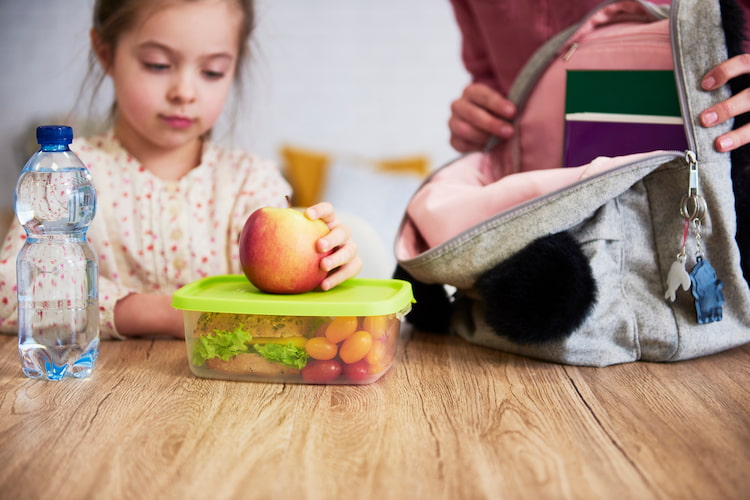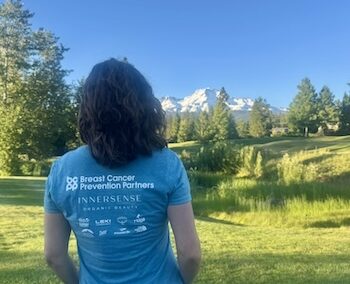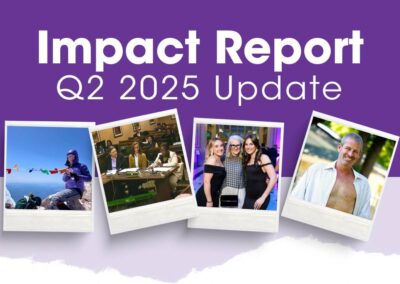Welcome to our series: Ask a Scientist
With BCPP Science Team Dr. Rainbow Rubin, PhD, MPH, and Pujeeta Chowdhary, MPH
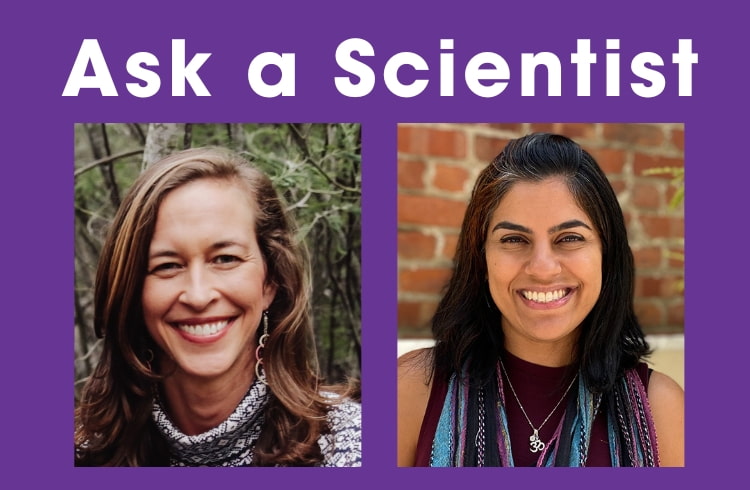
You asked about plastics. We have answers.
The environmental links to breast cancer are complex. Yet, we all shouldn’t have to be scientists to better understand the risks we face when it comes to this disease. At BCPP, our scientists are your scientists, too. We want to help answer your pressing questions and concerns with insights from BCPP’s leading science experts: Dr. Rainbow Rubin, PhD, MPH, and Pujeeta Chowdhary, MPH.
What’s the harm in plastic and PVC?
Plastic is one of the most widely used substances in the world due to its low cost and versatility; unfortunately, it also harms humans and the environment.
Polyvinyl chloride (PVC), for example, is a highly toxic form of plastic that potentially harms people and the planet at every stage of its lifecycle. PVC production starts with fossil fuel extraction and involves numerous hazardous chemicals during the production process, including asbestos, per-and poly-fluoroalkyl substances (PFAS, aka forever chemicals), ethylene dichloride, and vinyl chloride. PVC can also include harmful additives, such as heavy metals, bisphenols, phthalates, and flame retardants. Due to challenges with recycling PVC, waste incineration and landfills are the predominant disposal mechanisms. PVC incineration and its presence in landfills releases harmful chemicals into the air and groundwater and produces extremely toxic dioxins linked to breast and other cancers.
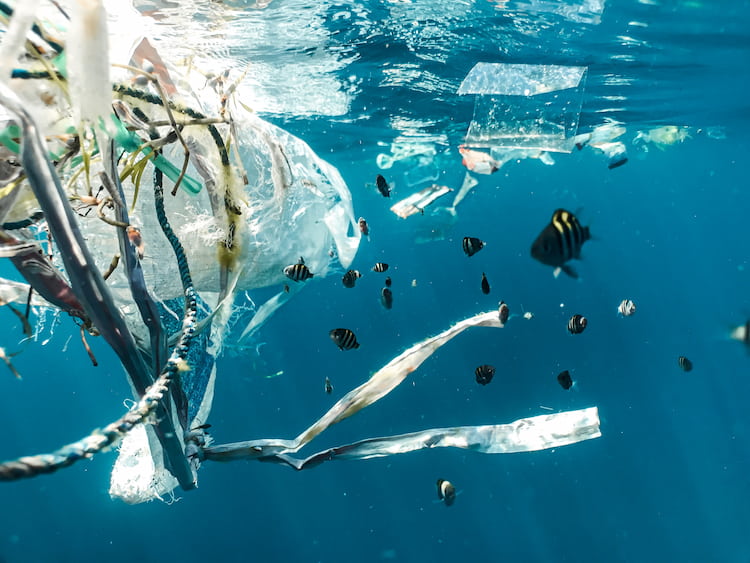
What we’re doing about it: Banning the worst toxic plastics to prevent breast cancer
To reduce our exposure to PVC and microplastics, BCPP is working on legislation to ban PVC in plastic packaging in California.
In partnership with Natural Resources Defense Council, Californians Against Waste, and Clean Water Action, we are co-sponsoring a crucial bill that would phase out the use of toxic plastic and plastic additives, including PVC (made of vinyl chloride, a carcinogen), PFAS (a group of chemicals that include carcinogens and endocrine disruptors), carbon black (a carcinogen), and oxo-degradable additives (break plastic into microplastics).
Stay tuned for action opportunities to support the bill!
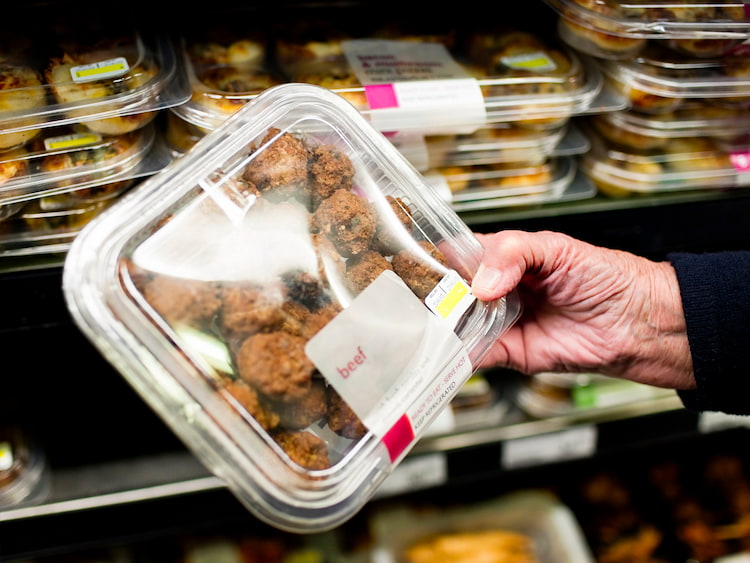
What you can do about it
The biggest single action we can take right now to address this devastating situation is to avoid single-use plastics. Most plastic trash is only used once, for a few minutes or even seconds. Yet, it ends up in landfills and pollutes waterways for hundreds of years.
Plastic production is estimated to triple by 2050, precisely the year that ocean fish are predicted to be few and far between because of over-fishing and habitat loss. There is already more plastic in the ocean than fish.
See more info below on how to avoid and reduce your use of plastic.
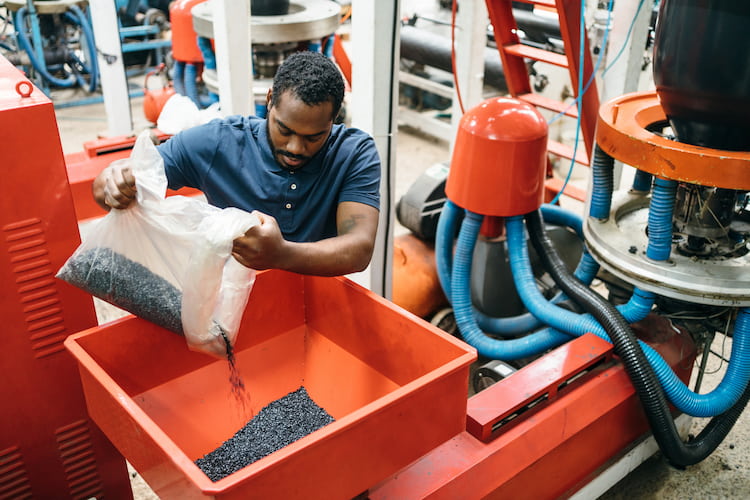
PVC production & recycling workers risk health impacts
Further, those who work in PVC production plants and recycling facilities may be exposed to these chemicals, which are linked to a host of health effects, including various types of cancer (breast, blood, lymph, liver, brain, and lung cancers).(1) Other health effects include reproductive toxicity and cardiovascular disease.
Plastic production & landfill neighbors may risk health impacts
Residents of “fenceline” communities, those adjacent to plastic production and waste disposal sites, experience increased risks of premature birth, low birth weight, asthma, childhood leukemia, cardiovascular disease, chronic obstructive pulmonary disease, and lung cancer.(1)
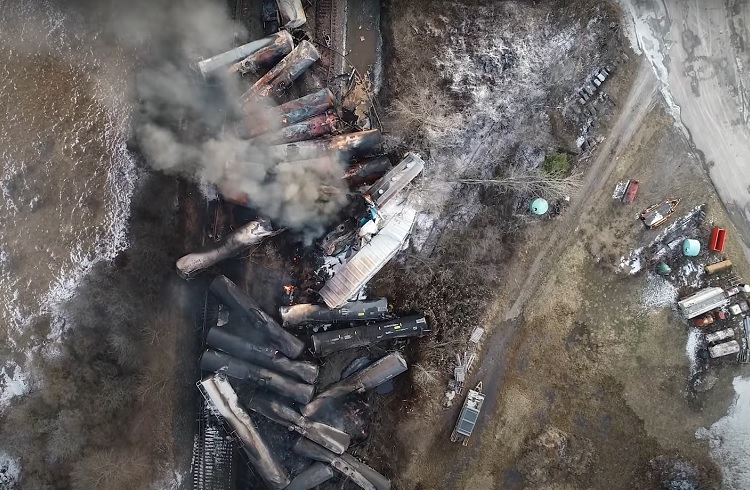
Photo courtesy of the National Transportation Board
East Palestine, Ohio Train Disaster & PVC Spill
The PVC burn in East Palestine, Ohio, highlights the need for more regulation around PVC. As a result of the derailment and subsequent chemical burn, residents around East Palestine were potentially exposed to dangerous levels of incineration byproducts, including dioxins. While there are many reports of short-term health effects from exposure, the long-term impacts, including increased breast cancer risk, won’t be identified for decades.
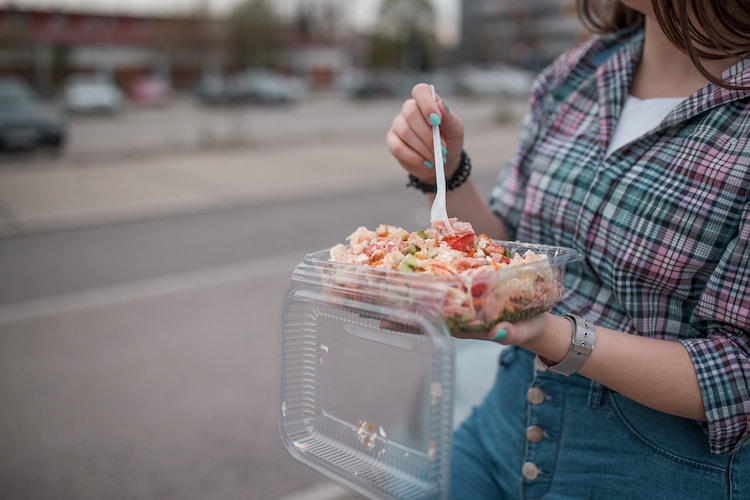
Plastic chemicals can leach into food and our bodies
Human exposure doesn’t stop once the final plastic has made its way to store shelves. Many of the chemicals in the finished plastic are not covalently bound to the plastic polymer matrix; thus, they can leach into the contents of the package (liquids or solids, including foods) or volatilize into the air.(2) Some examples of these chemicals include bisphenol A (BPA) and phthalates. BPA and phthalates are linked to breast cancer. Because most of us are continuously exposed to them through our food packaging, beverage containers, and products, they are commonly detected in our bodies.(3,4)
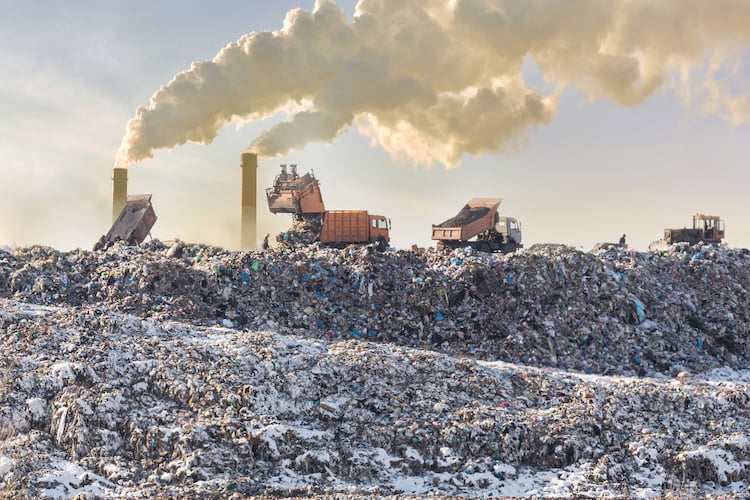
Plastic trash is landfilled or burned
When we throw away or recycle plastic, it does not “go away.” Most plastic ends up in landfills where it stays for decades, or is incinerated and releases those hazardous chemicals into the air. Some plastic trash ends up in the ocean, breaking down into smaller pieces by light, waves, and heat.
These microscopic bits of plastic are referred to as microplastics. Microplastics are a growing concern because they are small enough to exist unseen and undetected in our food, air, and water. Microplastics can even be inhaled or digested easily and, as a result, have been found in human breast milk, placenta, and stool.(5) (Despite the presence of microplastics and other contaminants in breast milk, the benefits of breast milk outweigh the risks for babies, if breastfeeding is possible.) Exposure can lead to biological changes, including oxidative stress, inflammation, and microplastic accumulation in organs. Some toxic compounds can even cling to microplastic surfaces, potentially introducing harmful chemicals into the body.(5)
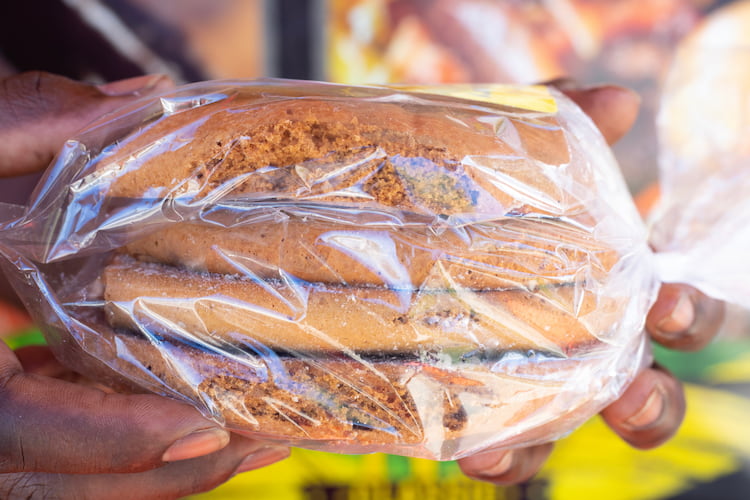
Q&A
Q: How do you recommend I reduce my use of plastics?
A: Invest in reusable non-plastic water bottles and grocery bags. Cut down on plastic wrap by using beeswax wraps or storing food in reusable, non-plastic containers like glass or stainless steel. Switch out the plastic straw for other reusable options (or ditch the straw altogether!). Purchase items in bulk to cut down on individually packaged goods (e.g., soap, laundry detergent, food, snacks, and drinks). It is not so hard to do once we get into the habit. Make it a household challenge by getting everyone involved in cutting down on plastic waste.
Q: How do I avoid toxic materials in plastic toys?
A: Plastic toys can contain many hormone-disrupting compounds, including bisphenols, phthalates, lead, formaldehyde, flame-retardant chemicals, and PVC. Check out this resource on choosing less harmful toys.
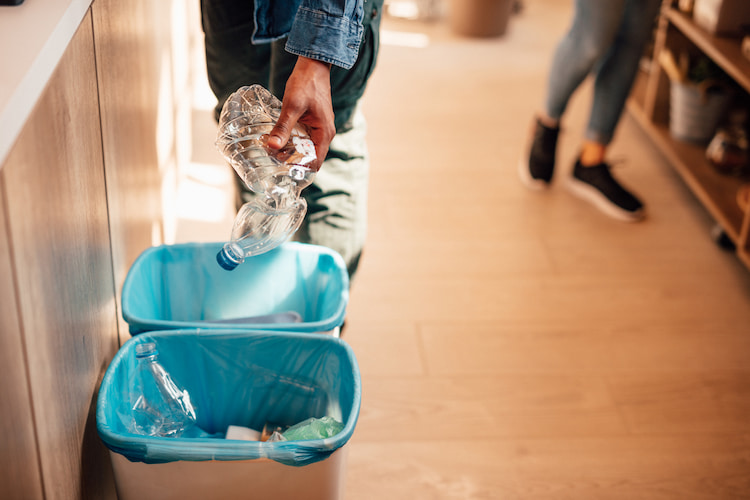
Q: How do we raise awareness about this in our communities?
A: Start talking about it with your kids. Kids are motivated, and they understand the importance of a cleaner planet. Bring up the issue at your child’s school and create a zero-waste committee so the parent and student community can learn how to cut down on plastic in our waste stream. Work with community leaders to improve the community waste stream by cutting down on plastics in our businesses and retail locations.
Recommended Watching
Policy Wins
BCPP successfully banned BPA from baby bottles, phthalates from toys, and more major policy wins. This year, we are co-sponsoring a bill banning PVC and PFAS from plastic packaging. Read more about our work on plastics:
- https://www.bcpp.org/resource/phthalates-victory-consumer-agency-to-ban-harmful-chemicals-in-childrens-toys/
- https://www.bcpp.org/resource/10th-anniversary-of-consumer-product-safety-improvement-act/
Key Terms
Single-use plastics: Plastics that are used once or for a short time. Examples include water bottles, plastic wrap, straws, coffee stirrers, and plastic grocery bags.
Microplastics: Small plastic pieces less than five millimeters long, formed by the breakdown of larger plastic debris.
PVC: Polyvinyl chloride is a polymer made from vinyl chloride and other chemical additives that form PVC plastic. It is commonly used in plumbing, medical supplies, packaging, and other applications.
Asbestos: A mineral fiber that is naturally occurring in rock and soil. Asbestos is added to many household materials and personal care items.
PFAS: Per-and poly-fluoroalkyl substances are highly persistent chemicals linked to severe health problems, including cancer, hormone disruption, kidney and liver damage, thyroid disease, developmental harm, and immune system disruption.
What issues do you want to hear about next?
Send us your questions! Email the BCPP Science Team.
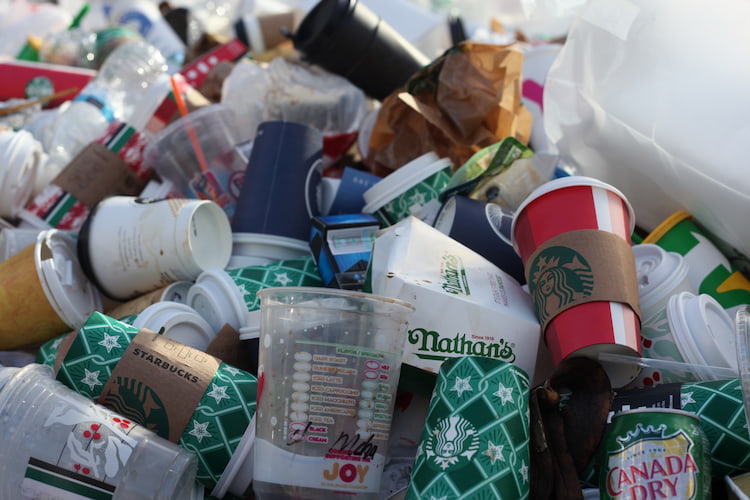
Support our science and health content
Science is the cornerstone of everything we do at BCPP. We’re always looking to find new ways to provide you with health-protective info. That’s why we launched this new series! Please make a gift of prevention today so we can bring you more science insights.
Footnotes
[1] https://annalsofglobalhealth.org/articles/10.5334/aogh.4056/
[2] Lisa Zimmermann, Georg Dierkes, Thomas A. Ternes, Carolin Völker, and Martin Wagner. Benchmarking the in Vitro Toxicity and Chemical Composition of Plastic Consumer products. Environmental Science & Technology 2019 53 (19), 11467-11477. DOI: 10.1021/acs.est.9b02293.
[3] Silva, M. J.; Barr, D. B.; Reidy, J. A.; Malek, N. A.; Hodge, C. C.; Caudill, S. P.; Brock, J. W.; Needham, L. L.; Calafat, A. M. Urinary levels of seven phthalate metabolites in the U.S. population from the National Health and Nutrition Examination Survey (NHANES) 1999–2000. Environmental Health Perspectives 2004, 112 (3), 331– 338. DOI: 10.1289/ehp.6723.
[4] Calafat, A. M.; Ye, X.; Wong, L.-Y.; Reidy, J. A.; Needham, L. L. Exposure of the U.S. population to bisphenol A and 4-tertiary-octyl phenol: 2003–2004. Health Perspect.2008, 116 (1), 39– 44. DOI: 10.1289/ehp.10753.
[5] https://pubs.rsc.org/en/content/articlehtml/2022/em/d1em00301a

